Home » Uncategorized
Category Archives: Uncategorized
Questions questions
By Nancy Xia
This year at CHIWORK 2025, which took place in the beautiful city of Amsterdam, I challenged myself to ask questions to the speakers at the conference.
Initially, my motivations were entirely personal. I wanted to develop my own confidence in voicing my thoughts and reflections before an audience. In addition, many of the works presented were genuinely engaging, thought-provoking, and sparked my curiosity, and I found myself putting up my hand at papers I did not expect myself to ask questions for!
This year, I was most taken in by the studies which explored the ways in which technology facilitated, or disrupted, people’s abilities to present themselves in a professional environment. In Framing the (in)visible: Insights into Visibility Practices of Remote Workers by Mehrvarz et al., I found that knowledge workers may signal their availability through leaving tabs open. In Management Strategies for Reducing Boundary and Identity Clashes When Using Discord for Both Working and Gaming by Mandryk et al., I learnt that workers manage different levels of transparency and identity clashes between their professional and gaming persona on Discord. Finally, I was curious to note, in What Does Success Look Like? Catalyzing Meeting Intentionality with AI-Assisted Prospective Reflections by Scott et al., that users dislike making their intents to socialise explicit when reflecting on meeting intentionality. They have given me much fruit for thought in my own work, where I explore how people’s perceptions of specific software tools, such as spreadsheets or GenAI, can discourage people from engaging in important knowledge sharing activities. Because our work can be such an important part of our identity, so too does the technology that we use in this work become inextricably connected to how others see us.
But outside of this technology, in a very real conference, surrounded by very real people, every interaction exists in the moment. The digital bubbles of working from home give us time to think and prepare before every interaction. At the conference, there is no such luxury. Talks and slides and Pushbox microphones fly past, and there is always the chair, tapping their watch expectantly as you try to untangle your thoughts along with your tongue.
Yet when inspiration and curiosity sparks, the questions come easily. And with questions comes dialogue, venting, friendships, and learning. I quickly found that my favourite people at the conference were the ones who asked engaging questions themselves. Whether it was sitting in and listening in on a well-articulated discussion that I would never have quite known how to phrase for myself, or having someone ask me a well-thought out and challenging question in response to my own work, my
personal challenge slowly helped me to realise that it was the questions – asking and being asked – that led to the most fruitful moments of connections.
As a so-called ‘digital native’ who has never experienced a non-virtual work environment, I am used to digital workplaces that gives me too much time to curate and fuss over my social image. But my time at this conference has reminded me that it is often more rewarding to choose genuine curiosity over a polished appearance. I hope to stay curious, and keep working up the courage to ask questions throughout my life.
Me and Fairuz Nawer Meem – a fellow PhD student who I met at another conference and who came to CHIWORK this year thanks to my recommendation!
I’m super grateful to Anna for making this trip happen for all the A-team, and Yoana for all the organisation! Wonderful connections were made on the journey as well – especially over a devastatingly competitive game of Kemps/Kent!
First Academic Conference Experience
By Yifei Gao
CHIWORK 2025 was the very first academic conference I’ve attended since starting my PhD studies in February 2025. It was truly an eye-opening experience. I now have a much clearer understanding of what an academic conference involves, and I’ve learned a lot from participating.

First, I want to express my heartfelt thanks to Anna for taking us on this trip. Second to Yoana for organising the accommodation and train tickets. I had such an enjoyable time with everyone from our team.

Over the three-day conference, I took part in two workshops on Day 1:
- The Future of Human-Robot Synergy
- Paving the Way for AI that Supports Flourishing at Work
These workshops included group activities (such as designing a robot to help people work more efficiently in restaurants) and lively discussions with participants around the table. It was inspiring to share ideas and explore practical applications of AI in collaborative settings.
In these workshops, I discovered many links between my own research and the work of others. Notably, many studies emphasised the importance of trust in promoting effective human–robot collaboration—both in the workplace and in educational contexts.
Two presentations on Days 2 and 3 stood out to me:
- tAIfa: Enhancing Team Effectiveness and Cohesion with AI-Generated Automated Feedback – This study resonated strongly with my collaborative paper on evaluating students’ trust in three types of feedback, although their work specifically focused on AI-generated feedback in team-based settings on Slack.
- Cleared for Takeoff – Artificial Intelligence Acceptance in Air Traffic Control – I found this work particularly inspiring because they also used structural equation modelling (SEM) as part of their data analysis. It gave me some inspiration about combining models like TAM, AIAM, and TAWE to explore explanatory variables behind AI acceptance in air traffic control and beyond.
Beyond the academic sessions, CHIWORK was also a valuable opportunity to network and explore potential collaborations. Although almost everyone was new to me (except for our team), I had many friendly conversations and connected with attendees on LinkedIn.

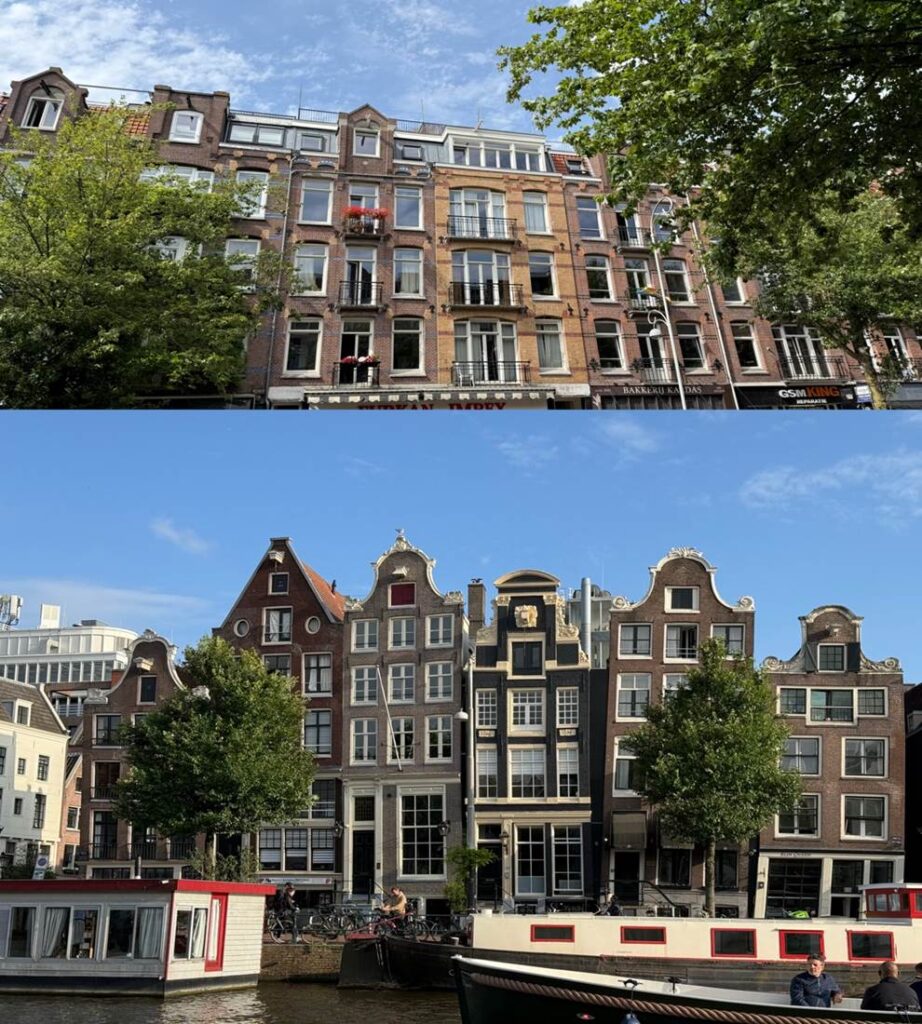
Looking ahead, I’m planning to present at CHIWORK next year. I believe it would be a great opportunity to receive feedback and questions on my work, while also allowing others in the field to get to know me and my research. After delivering presentations at the UCLIC and IOE summer conferences this June, I feel more confident in presenting my research clearly and engagingly—especially at larger international events like CHIWORK.
Peer Review at CHIWORK25
by Shiping Chen
Summer has brought not only sunshine but also the excitement of the annual CHIWORK conference! I’m thrilled to be a paper presenter at CHIWORK this year. CHIWORK 2025 is being hosted in Amsterdam, The Netherlands. Although I wasn’t able to attend in person due to other commitments, I still felt the vibrant academic energy of CHIWORK as an online presenter.
My presentation was scheduled on the morning of 24 June, in the “AI IN HIGH-STAKES AND INSTITUTIONAL WORK” session. As a hybrid conference, CHIWORK provided a seamless and well-coordinated experience, making it easy for both in-person and online participants to engage with the programme. I really appreciated how smooth the transition was between talks, with Zoom rooms and Slack channels well-organised for announcements and Q&A.
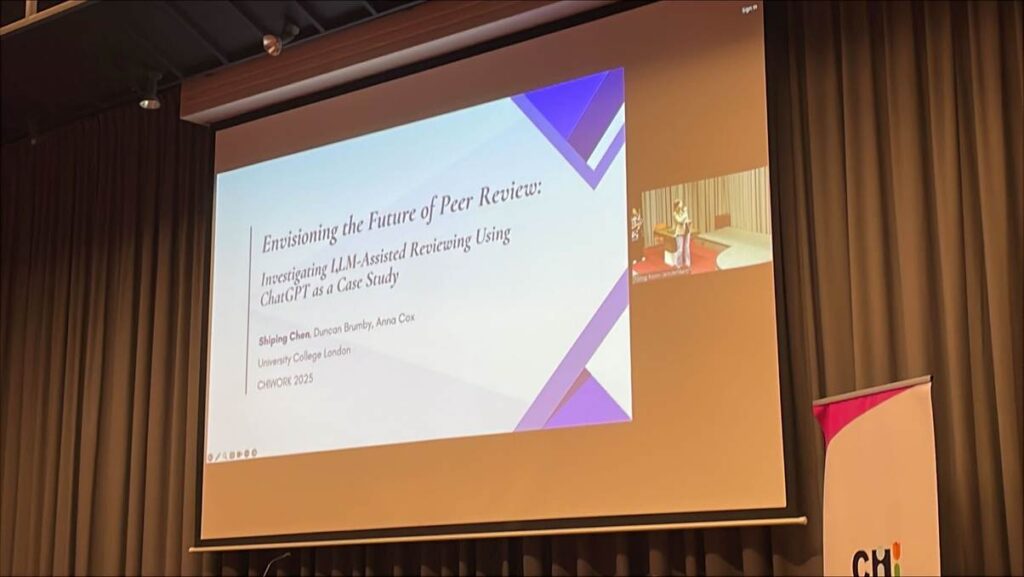
My paper, Envisioning the Future of Peer Review: Investigating LLM-Assisted Reviewing Using ChatGPT as a Case Study, co-authored with my supervisors Prof. Duncan Brumby and Prof. Anna Cox, explores how Large Language Models like ChatGPT can support human reviewers during the peer review process. Rather than treating AI as a standalone reviewer, our study takes a human–AI collaboration perspective to understand how reviewers actually use ChatGPT in practice. We conducted a within-subject experiment with 24 HCI reviewers, each completing two review tasks—one with ChatGPT assistance and one without—followed by post-task questionnaires and interviews. Our findings show that ChatGPT can significantly reduce the perceived workload in drafting reviews and making judgments, and reviewers appreciated its support for summarisation, information retrieval, idea generation, and confidence-building. However, it did not lead to substantial time savings or improvements in review quality. These insights contribute to ongoing discussions around responsible AI integration in scholarly publishing and offer design implications for future peer review tools that complement human expertise.
The Q&A after my presentation gave me the opportunity to respond to insightful questions from the audience that touched on the core motivations and assumptions behind our study. It was a valuable chance to elaborate on the reasoning behind our experimental design, particularly why we chose to focus on ChatGPT as a case study. I was encouraged by the genuine interest in the practical implications of LLMs for real-world peer review, and the discussion helped me further reflect on how such tools might be responsibly integrated into academic workflows.
Although I joined the conference remotely, I still came away with a great deal of inspiration, thoughtful questions, generous feedback, and new ideas to take forward. I’m grateful to have been part of such a welcoming and intellectually engaging community, and I look forward to staying connected with CHIWORK in the years to come.
Reflections from CHIWORK 2025: My First Conference as a PhD Researcher
By Sarah Frampton
This week I had the privilege of attending CHIWORK in Amsterdam – my first conference since starting my PhD. It was energising to be surrounded by researchers who are not only asking difficult questions about the role of AI in the future of work, but also pushing for a deeper understanding of what we should automate versus what we must preserve, support, or augment in human labour.
A personal highlight was the chance to share and reflect on my own work in conversation with the brilliant Marios Constantinides and Cristina Zaga as well as fellow students. Their thoughtful questions challenged me to examine why the problem of hidden mental load in family life, the invisible, value-driven coordination so often carried by one person, is one that might be meaningfully supported by digital tools, rather than other forms of intervention.
I’m leaving with a notebook full of provocations, encouragement, and ideas, and a deep sense of gratitude for this community.
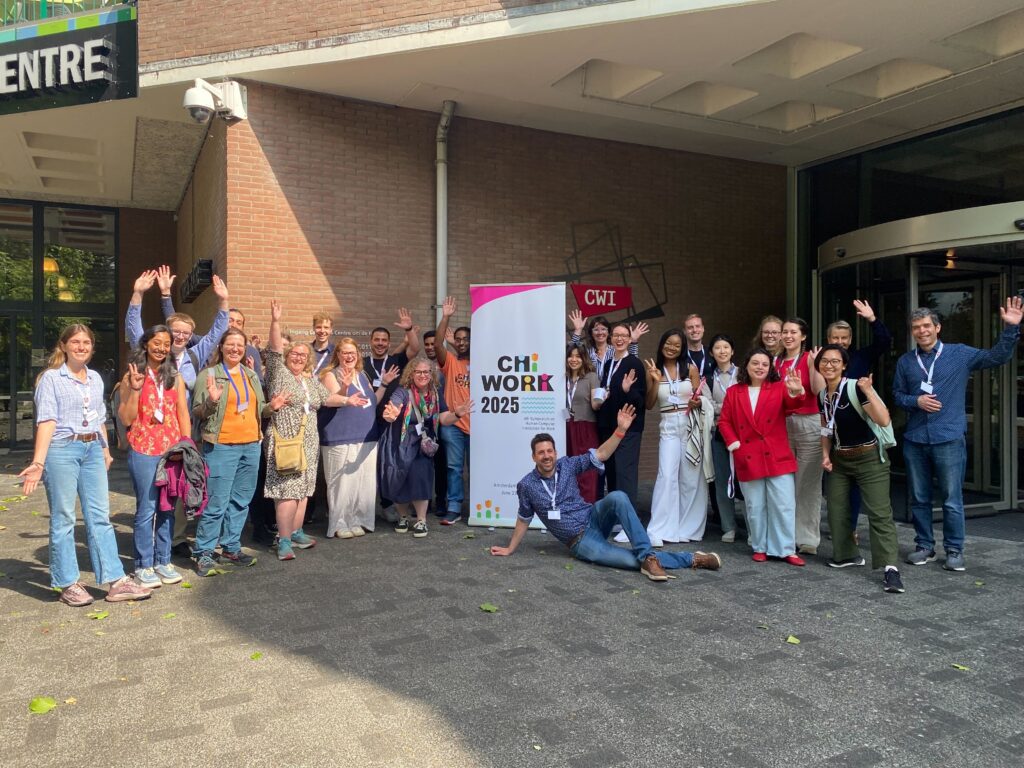
Writing Now! Keeping the Human Voice in AI-Assisted Writing
An Essay in Honour of Harold Thimbley by Anna L Cox, Duncan P Brumby & Sandy JJ Gould
What does it mean to write now, in an age of generative AI? Seventeen years after Harold Thimbleby’s much-loved chapter Write Now! was published, we’re still recommending it to our students—not just for its practical advice, but for the way it captures the human side of writing. In this article, we reflect on why Thimbleby’s message continues to resonate, even as tools like ChatGPT reshape how we write. Drawing on a real-world case study, we show how AI can support the writing process—not by replacing the writer, but by working alongside them. When used thoughtfully, AI can help overcome familiar hurdles like perfectionism and procrastination, and even surprise us with fresh phrasing. Yet the essence of good writing remains the same: clarity, voice, and a willingness to think through words. This article is both a tribute to Write Now! and an exploration of what writing can become when new tools meet old habits.
Mapping the landscape of functionality reviews in HCI: trends, methods, and contributions
❔ What is it about?
Together with Elahi Hossain, Yoana Ahmetoglu (nee Petrova), Anna Dowthwaite, Laura Lascău, Jon Mella, and Nora Stern I’m pleased to announce we have now published a paper in 𝘐𝘯𝘵𝘦𝘳𝘢𝘤𝘵𝘪𝘯𝘨 𝘸𝘪𝘵𝘩 𝘊𝘰𝘮𝘱𝘶𝘵𝘦𝘳𝘴 that outlines an emerging Human-Computer Interaction (HCI) method for reviewing user-facing technologies!
👥 Who is this for?
Any HCI/UX researchers -especially MSc and PhD students- who want to know how to go about reviewing different examples of a technology designed for humans to directly interact with (e.g., a set of health/fitness/finance/wellbeing apps, chatbots etc.)
💡 What did we do in this paper?
1️⃣ Proposed “𝗳𝘂𝗻𝗰𝘁𝗶𝗼𝗻𝗮𝗹𝗶𝘁𝘆 𝗿𝗲𝘃𝗶𝗲𝘄” as an umbrella term to formally define the phenomena of ‘researchers examining a set of existing technologies to understand their features’ as a new emerging HCI method.
2️⃣ Identified three primary research aims that characterize functionality reviews in the HCI field: classification, evaluation, and insight development.
3️⃣ Proposed a typology that categorizes functionality reviews based on 1) search approach (systematic versus scoping), and 2) reviewing approach (descriptive versus critical analyses) – allowing researchers to better align their research objectives (i.e., why to conduct a functionality review) with appropriate methodological choices (i.e., how to conduct a functionality review).
Why is this important?
By defining functionality reviews, outlining their methodological characteristics, and developing a typology, we aim to establish a foundation for the standardization of this emerging HCI method.
Cite as: Elahi Hossain, Yoana Ahmetoglu, Shiping Chen, Anna Dowthwaite, Laura Lascau, Jon Mella, Nora Stern, Anna L Cox, Mapping the landscape of functionality reviews in HCI: trends, methods, and contributions, Interacting with Computers, 2025;, iwaf027, https://doi-org.libproxy.ucl.ac.uk/10.1093/iwc/iwaf027
Measuring Immersion: The IEQ Explained
Are you interested in studying the psychology of gaming or immersive experiences? The Immersive Experience Questionnaire (IEQ) is an essential tool that can help you measure immersion—the psychological experience of being deeply engaged in a task, such as playing a video game. Whether you’re investigating what makes games so captivating or analyzing the factors that influence immersion, the IEQ provides a structured, validated approach to quantify this fascinating phenomenon.
What Is the IEQ?
The Immersive Experience Questionnaire (IEQ) is a tool designed to measure the degree of immersion an individual experiences during a particular activity, such as playing a game or using a virtual reality system. Immersion is assessed across five dimensions:
- Cognitive Involvement: The mental effort and focus dedicated to the activity.
- Real-World Dissociation: The extent to which an individual loses awareness of their surroundings.
- Challenge: How well the difficulty of the task matches the individual’s skills.
- Emotional Involvement: The level of emotional engagement with the activity.
- Control: How much autonomy and ease the individual feels during the activity.
The IEQ uses a combination of Likert-scale questions to measure these dimensions, offering a detailed picture of how immersive an experience was.
Resources to Get Started
To help you score and interpret the IEQ, we’ve prepared two resources:
- IEQ Scoring Guide: A document that explains how to calculate scores for each dimension of the IEQ.
- IEQ Scoring Spreadsheet: A pre-formatted spreadsheet where you can input participants’ responses and automatically calculate their scores.
These resources will save you time and ensure that your analysis is accurate and consistent.
How to Use the IEQ
- Administer the Questionnaire: Give the IEQ to participants after they have completed the immersive activity you’re studying. Ensure they understand the questions and the context in which they should respond.
- Collect Data: Make your own copy of the spreadsheet. Gather responses and enter them into the IEQ Scoring Spreadsheet.
- Score the Responses: Use the guide and spreadsheet to calculate scores for each dimension as well as an overall immersion score.
- Interpret the Results: Compare scores across participants or experimental conditions to uncover patterns or insights about immersion.
Jennett, C., Cox, A. L., Cairns, P., Dhoparee, S., Epps, A., Tijs, T., & Walton, A. (2008). Measuring and defining the experience of immersion in games. International journal of human-computer studies, 66(9), 641-661.
Designing personalized mental health interventions for anxiety
by Andreas Balaskas | Reblogged from https://htd.scss.tcd.ie/designing-personalized-mental-health-interventions-for-anxiety/
| We previously wrote a short blogpost about our paper that was published earlier this year. Andreas has written a much better one so we have reblogged it here |
Anxiety disorders affect approximately 264 million adults worldwide, leading to significant impacts on daily functioning, including avoidance behaviors, excessive worry, and fear. These disorders often begin early in life and, if left untreated, can result in long-lasting impairments in functioning. Cognitive-behavioral therapy (CBT) is a highly effective treatment for anxiety disorders, focusing on educating clients about the link between their thoughts, actions, and emotions and providing them with skills to break these connections.
CBT is typically delivered in clinical settings where therapists collaborate with clients to develop and practice skills, often using homework to reinforce the skills learned during therapy sessions in real-life situations. Recent technological advancements have expanded treatment accessibility through online platforms and mobile apps. Despite their potential benefits, many mental health apps are not optimized for clinical use and often fail to gain traction. High attrition rates and rare sustained use are significant challenges faced by these technologies.
One of the main reasons for disengagement from mental health apps is the lack of personalization and customization options. Current technology-based interventions are often not tailored to account for individual variability. Research indicates that mental health technologies could benefit from some human support from a coach or therapist to maintain engagement.
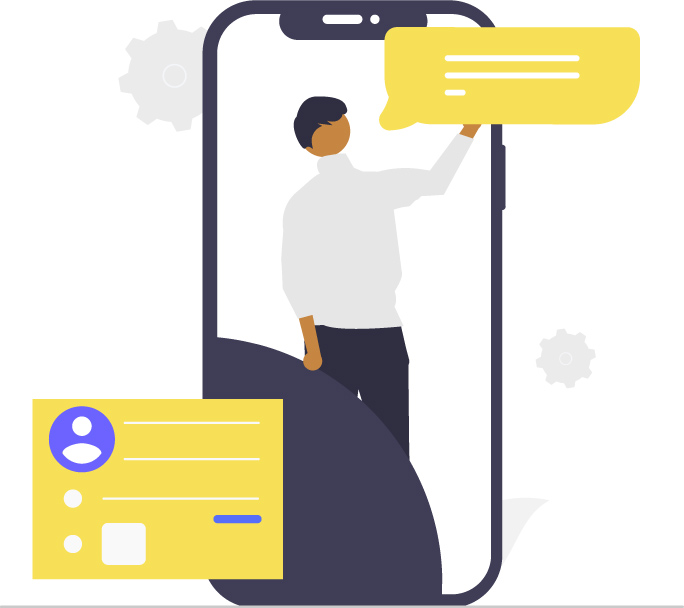
Therapists understand that treatment should be tailored to the unique context of each client, considering both the diagnosed disorder and the individual characteristics of the client. However, little is known about how CBT therapists’ input can be best integrated into the personalization of mobile technologies, how therapists view this possibility, and which features and content are worth shaping.
This paper, published in the International Journal of Human-Computer Studies explores CBT therapists’ perspectives on delivering tailored intervention content to users of mental health mobile technologies for anxiety management. Using interviews and ideation sessions, it uncovers current therapy practices and examines how tailoring can be offered at different treatment stages and what tailoring needs should be considered. Through this understanding, we seek to uncover a broader range of possibilities for designing personalized mobile applications for therapist-supported CBT.
The results showed that clients play a central role in shaping the content of therapeutic sessions and consequently affecting the delivery of intervention content through the use of apps. Therapists requested an active role in the personalization of such systems and requested a modular approach in which a dashboard is used to tailor the content of predefined modules based on different client characteristics. In contrast to existing technology-based systems for intervention delivery, effective personalization requires the modification of predefined modules. Our study shows that personalization strategies for the delivery of intervention content based only on the type of anxiety disorder (e.g. Generalised Anxiety Disorder) or severity of symptoms are inadequate for the design of highly personalized interventions and different user characteristics should be taken into consideration.
We highlight the different client characteristics that should be taken into consideration in the design of personalized technologies. Designing personalized digital interventions for anxiety disorders requires supporting flexibility and taking different individual characteristics into account.
The integration of personalized mobile CBT applications has the potential to revolutionize anxiety management by enhancing client engagement and support. By involving therapists in the tailoring of treatment and developing technology-enabled services, we can create sustainable, effective, and personalized mental health interventions that extend the reach and impact of traditional therapy. As we continue to explore and innovate in this field, the ultimate goal remains to provide clients with the best possible support for managing their anxiety, both within and beyond the therapy room.
Refer to this publication:
Balaskas, A., Schueller, S. M., Doherty, K., Cox, A. L., & Doherty, G. (2024). Designing personalized mental health interventions for anxiety: CBT therapists’ perspective. International Journal of Human-Computer Studies, 103319.
Anna will be giving a keynote at Mensch & Computer 24
Find out more about the conference at https://muc2024.mensch-und-computer.de/en/

Designing personalized mental health interventions for anxiety: CBT therapists’ perspective
We recently had a new paper accepted for publication. This is the fifth and final study from Andreas Balaskas PhD research and was part of a collaboration with Gavin Doherty from Trinity College Dublin, Devin Doherty from University College Dublin and Stephen Schueller from University of California Irvine. The paper is available open access in the International Journal of Human-Computer Studies! 🎉
In this study, we explore CBT therapists’ work and gain their perspectives on designing personalized mental health interventions for anxiety disorders that would be used between face-to-face sessions.
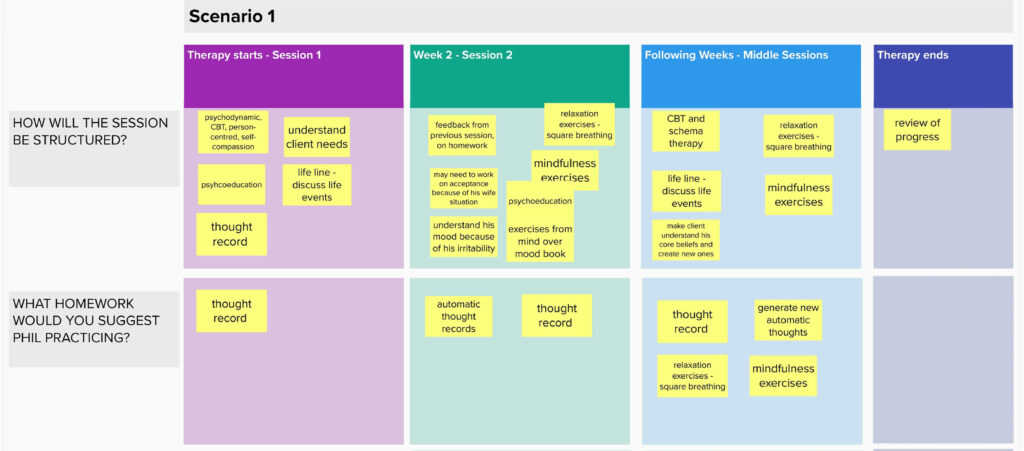
Through semi-structured interviews and ideation activities, we identified key characteristics for personalizing mobile apps that can be used alongside therapy. This research offers valuable insights for designers of personalized mental health technologies.
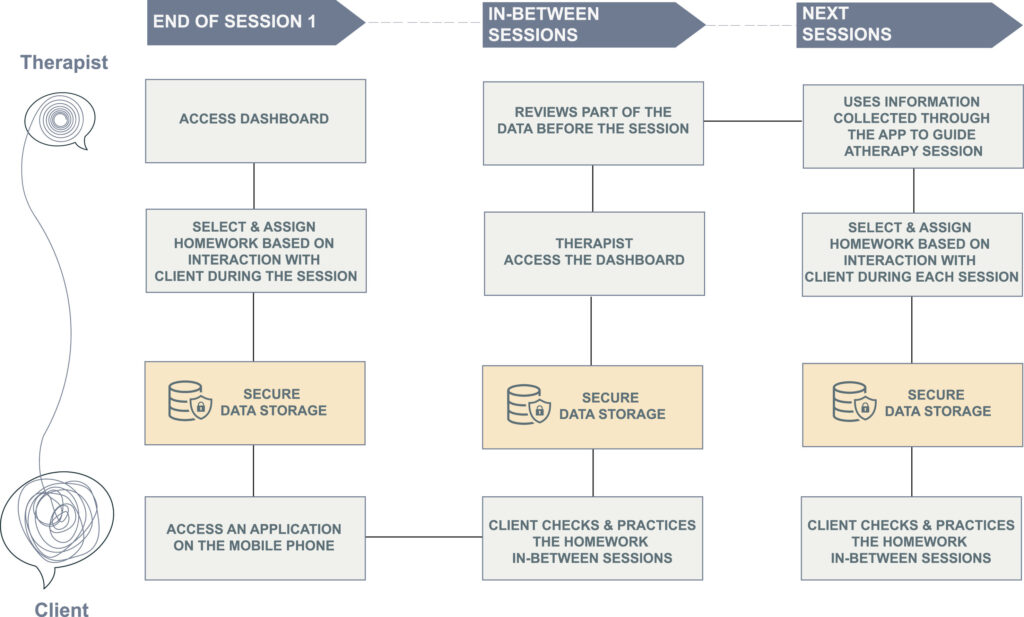
Highlights
- We present CBT therapists’ perspectives on the design of digital mental health interventions.
- We present a range of tailoring characteristics for the personalization of apps to be used in-between therapy sessions.
- We provide takeaways for designers of personalized mental health mobile applications.

